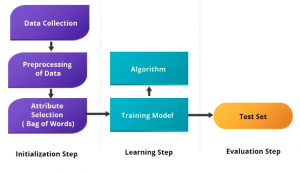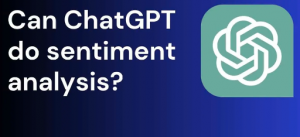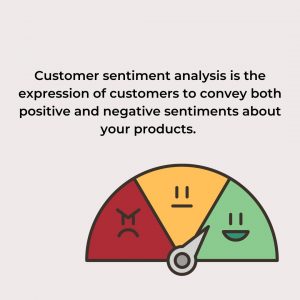In today’s hyper-connected world, understanding the emotions and sentiments of your customers is not just an option—it’s a necessity. The ability to gauge public sentiment towards your brand, products, or services can provide invaluable insights into customer satisfaction, market trends, and the overall health of your business. This is where customer sentiment software comes into play, offering businesses a key to unlock the treasure trove of customer emotions and feedback scattered across various digital platforms. As Maya Angelou famously said, “People will forget what you said, people will forget what you did, but people will never forget how you made them feel.” Let’s explore how sentiment analysis tools help businesses remember and interpret how they make their customers feel.
What is Sentiment Software?
Sentiment software, at its core, is a technological solution designed to analyze, understand, and interpret emotions from textual data. This software leverages natural language processing (NLP), machine learning, and artificial intelligence to sift through customer feedback, social media posts, reviews, and other forms of written communication to determine the sentiment—positive, negative, or neutral—behind the words.

Understanding the Mechanics
Sentiment software works by parsing text to identify specific words and phrases that indicate sentiment. It then assigns a sentiment score to the text, allowing businesses to quantify customer feelings and perceptions at scale. This process not only helps in understanding current customer sentiment but also aids in predicting future customer behaviors and preferences.
Real-World Application
Imagine being able to adjust your marketing strategy in real-time based on how your customers feel about your latest product release. Sentiment software enables just that, offering businesses the agility to respond to customer feedback swiftly and effectively. As Jeff Bezos once noted, “Your brand is what other people say about you when you’re not in the room.” Sentiment software ensures that you always have an ear to the ground, listening to what your customers are saying.
What Tool is Used for Sentiment Analysis?
When it comes to tools for sentiment analysis, there is a wide array of options available, ranging from bespoke solutions tailored for specific industries to versatile platforms designed for general use. The choice of tool often depends on the specific needs of the business, including the volume of data to be analyzed, the complexity of the sentiment analysis required, and the budget.
Popular Tools in the Market
Some of the most popular tools for sentiment analysis include CommentsAnalysis, Brandwatch, Sentiment Analyzer, and Lexalytics. These platforms offer robust sentiment analysis capabilities, integrating advanced NLP algorithms and machine learning models to provide deep insights into customer sentiment.
Choosing the Right Tool
Selecting the right sentiment analysis tool is crucial for businesses looking to leverage customer sentiment for strategic advantage. It’s important to consider factors such as ease of integration, scalability, and the level of support offered by the tool provider. As Albert Einstein wisely put it, “The measure of intelligence is the ability to change.” The right sentiment analysis tool should empower your business to adapt and evolve based on customer feedback.
Customer Sentiment Analysis
Customer sentiment analysis is the process of using sentiment software to systematically analyze customer feedback and derive actionable insights. This analysis helps businesses understand the “why” behind customer behaviors, enabling them to tailor their offerings and communications to better meet customer needs.
Benefits of Customer Sentiment Analysis
Engaging in customer sentiment analysis offers numerous benefits, including improved customer satisfaction, enhanced product development, and more effective marketing strategies. By understanding customer sentiment, businesses can create more personalized experiences, leading to increased loyalty and advocacy.
Implementing Sentiment Analysis
Implementing customer sentiment analysis requires a strategic approach, starting with the identification of key data sources and the integration of sentiment analysis tools. Training your team to interpret sentiment analysis results effectively is also crucial, as the insights gleaned from the data are only as valuable as the actions they inspire.

How Do You Track Customer Sentiment?
Tracking customer sentiment involves continuous monitoring of customer feedback across multiple channels, including social media, customer reviews, and direct feedback. Utilizing sentiment software, businesses can automate this process, enabling real-time sentiment tracking and analysis.
Techniques for Effective Tracking
Effective sentiment tracking requires a comprehensive approach, encompassing not only the quantitative analysis provided by sentiment scores but also qualitative analysis through a manual review of feedback. This dual approach ensures a more nuanced understanding of customer sentiment.
Leveraging Insights for Business Growth
The insights obtained from tracking customer sentiment can inform various aspects of business strategy, from product development to customer service. By acting on these insights, businesses can enhance customer satisfaction and foster stronger relationships with their customers.
Can ChatGPT Do Sentiment Analysis?
Yes, ChatGPT can perform sentiment analysis to a certain extent. Leveraging its advanced NLP capabilities, ChatGPT can understand and interpret the sentiment of text input, providing businesses with a basic overview of customer sentiment. However, for more complex sentiment analysis, specialized sentiment software may be required.

ChatGPT’s Role in Sentiment Analysis
While ChatGPT can offer quick insights into sentiment, its analysis is generally less nuanced than that provided by dedicated sentiment analysis tools. Nevertheless, ChatGPT can be an invaluable asset for businesses looking to dip their toes into sentiment analysis without significant investment.
Customer Sentiment Software Free
For businesses on a tight budget, there are several free customer sentiment software options available. Tools like Tweepy for Twitter sentiment analysis, and Natural Language Toolkit (NLTK) for more general sentiment analysis, offer basic capabilities without the need for investment.
Limitations of Free Tools
While free tools can provide a good starting point for sentiment analysis, they often come with limitations in terms of scalability, accuracy, and depth of analysis. Businesses looking to leverage sentiment analysis strategically should consider investing in more robust solutions as they scale.
Sentiment Analysis Tool Online
Online sentiment analysis tools offer a convenient and accessible way for businesses to analyze customer sentiment. These cloud-based platforms provide the flexibility to scale sentiment analysis efforts in line with business growth, ensuring that insights remain relevant and actionable.

Advantages of Online Tools
One of the key advantages of online sentiment analysis tools is their ease of use and integration. Many of these platforms offer APIs that can be easily integrated with existing business systems, streamlining the sentiment analysis process.
Free Social Media Sentiment Analysis Tools
Social media is a goldmine of customer sentiment data, and there are several free tools designed specifically for social media sentiment analysis. These tools allow businesses to monitor and analyze sentiment across platforms like Twitter, Facebook, and Instagram.
Navigating the Landscape of Free Tools
While free social media sentiment analysis tools can offer valuable insights, it’s important for businesses to carefully assess the accuracy and reliability of these tools. Leveraging multiple tools in conjunction can provide a more comprehensive view of social media sentiment.
Best Customer Sentiment Software
Determining the best customer sentiment software ultimately depends on the specific needs and goals of your business. Factors to consider include the volume of data to be analyzed, the platforms from which data will be collected, and the level of granularity required in the analysis. You can upload the Bulk file of your customer’s opinions on the Sentiment Analysis Service of CommentsAnalytics and ensure the quality of service using our Free Plan.

Top Contenders
Some of the top contenders in the customer sentiment software space include Brandwatch, Lexalytics, and Sentiment Analyzer. These platforms offer advanced sentiment analysis capabilities, backed by robust NLP algorithms and machine learning models.
In conclusion, as businesses strive to navigate the complexities of the digital landscape, understanding and leveraging customer sentiment has become a critical factor for success. Customer sentiment software offers a powerful tool for businesses to tap into the wealth of insights hidden within customer feedback, enabling them to make informed decisions that drive growth and enhance customer satisfaction. Remember, as Warren Buffett succinctly put it, “It takes 20 years to build a reputation and five minutes to ruin it. If you think about that, you’ll do things differently.” Sentiment analysis helps ensure that those five minutes never come.